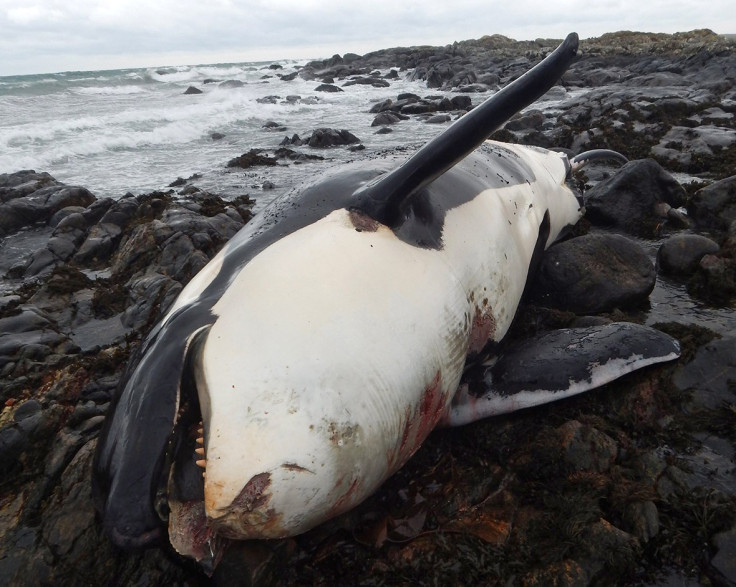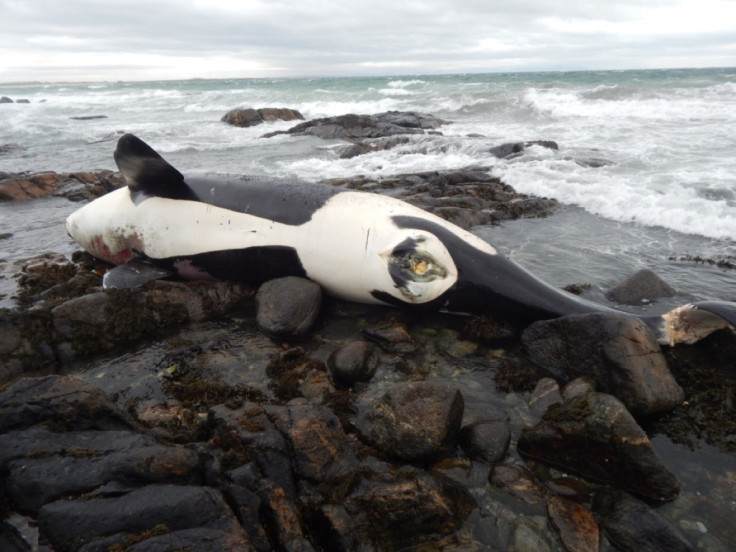Lulu the killer whale overdosed on posioned seals in UK's toxic coastal waters
The West Scottish killer whale pod hasn't bred in 20 years and is 'doomed to extinction'.

A killer whale found dead on the West Coast of Scotland had the highest level of a class of banned chemicals in her blubber of any animal ever reported in the UK.
The killer whale, known as Lulu, was one of a small pod on the West Coast of Scotland. The pod, which now contains just 8 whales, feeds on seals, which have high levels of the toxic manmade compound polychlorinated biphenyls (PCBs). Lulu's blubber contained a record-breaking 957 mg of PCB per kg, more than 100 times the estimated safe limit.
The whale was found entangled in fishing nets. The Scottish marine Animal Stranding Scheme, which performed an autopsy on Lulu, said that the high levels of PCBs probably weakened her and were implicated in her death.
"The levels of PCBs in Lulu are the highest for an individual animal we've had in the UK," Paul Jepson, a researcher at the Institute of Zoology at the Zoological Society of London told IBTimes UK. Jepson is also a member of ZSL's Cetacean Stranding Investigation Programme, which investigates the cause of death of marine animals around the UK.
"The other highest levels have been in killer whales as well, in the same area as where Lulu was found."
Used in electrical equipment and, primarily, in carbon-copy paper, PCBs were banned in the UK in 1981 because of their environmental and health effects but not before thousands of tonnes of PCB-contaminated material was pumped into UK coastal waters.
Classed as 'persistent organic pollutants' (POPs), the effects can linger for decades and PCBs can cause reproductive health problems in many animals, from humans to polar bears.

"Lulu's group haven't had a calf born alive for 20 years or more – there's zero reproduction in the group," Jepson said. "In a pristine environment, killer whales would be expected to have a calf every two to three years.
This area of the UK is not particularly high in PCBs. However, it is one of the only regions in Europe where killer whales feed on seals rather than fish and this particular diet can explain why they have such high PCB levels.
This is because toxins accumulate up the food chain – as seals are far higher up in the food chain than fish, they will contain higher levels of PCBs. Killer whales that eat seals are therefore exposed to more PCBs than killer whales that eat fish.
Because of their diet of seals, there is no hope that this pod of killer whales will recover, Jepson said.
"No there's no chance of them recovering at all. The pod could only survive if some new killer whales came in from another region, and unfortunately I think that's very unlikely to happen.
"Unfortunately it does look like this population is doomed to extinction."
© Copyright IBTimes 2024. All rights reserved.







